Router Sub-base (and Edge Guide)
Table of contents
I love my little trim router, but for whatever reason Makita deemed it not fit for use with common Porter Cable (PC) guide bushings. Guide bushings are great for templates and use with jigs for bits without bearings.
This will also apply to full size routers, but you’ll just need to scale up the acrylic.
While I was at it, I added in an edge guide since it goes for a pretty pricey $80AUD or so.
Tools needed
- Drill bits – you’ll need several specific size drill bits
- 35mm Forstner Bit
- 32mm Forstner Bit
- Small brad point bits (in my case, 4mm & 10mm)
- Preferably a vix/self centering bit too
- Jigsaw
- Drill press – drilling acrylic with large forstner bits is a no-go in a cordless drill
Supplies:
- Acrylic
- 18mm Plywood
- Hardwood strip (Optional)
- “Hardware” – I used M8, but M6, 3/8″ or 1/4″ would be fine. You’ll want two bolts, two wing nuts or star knobs, and two washers
Why Acrylic?
For nearly all jigs in the workshop, you want dimensionally stable materials. This usually means using metal, plywood, mdf or plastics.
For this sort of jig,
- Metal would be too heavy, difficult to work with as you can’t use regular woodworking tools.
- MDF wouldn’t take the fine details needed at the desired thickness. The thicker the material reduces the plunge depth the router has
- Plywood would work, but can be a little less dimensionally stable at thinner thicknesses, but the nail in the coffin – so to speak – is it is very difficult to find clear plywood
Meanwhile, acrylic is cheap, strong, and clear!
Acrylic Base
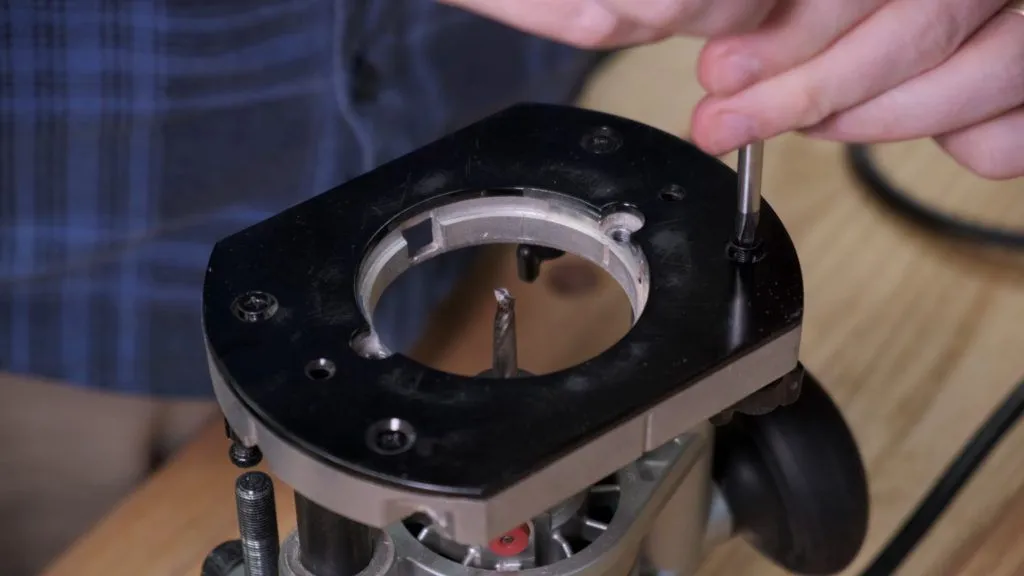
The first step is to remove the factory sub-base. In the case of this Makita router, it’s four flat-head M4 phillips head machine screws.
Using the factory base to get the width, the acrylic can be cut to size at the table saw. No fancy blade is needed.
Using the factory base again, transfer the screw locations onto the acrylic. Alternatively, if you have a self centering drill bit – also known as a vix bit – this can be a much easier way to transfer the holes. I prefer to tape down the base, so it doesn’t shift while drilling.
At the drill press, extend those marks all the way through with a twist drill bit slightly larger than the diameter of the machine screws.
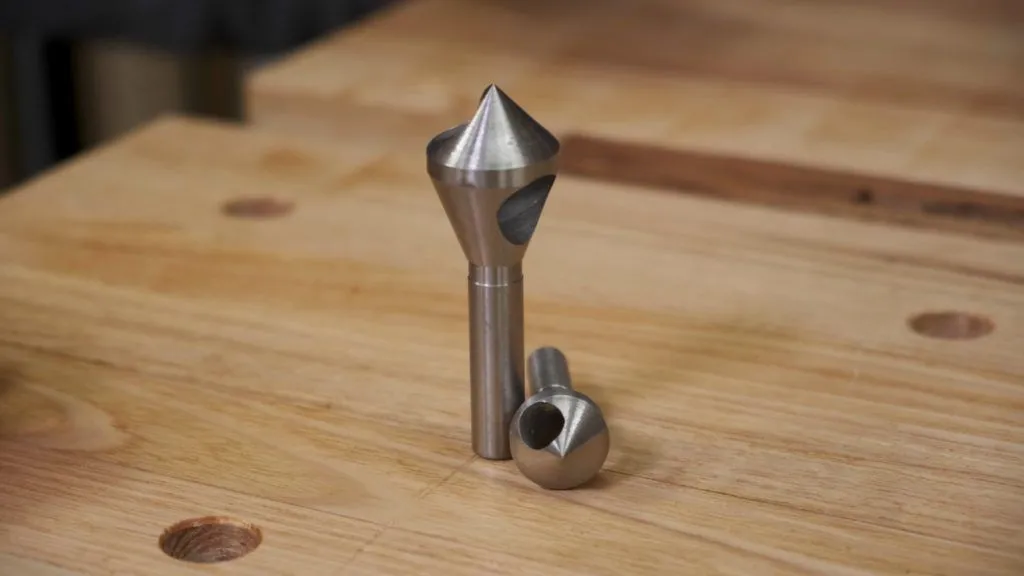
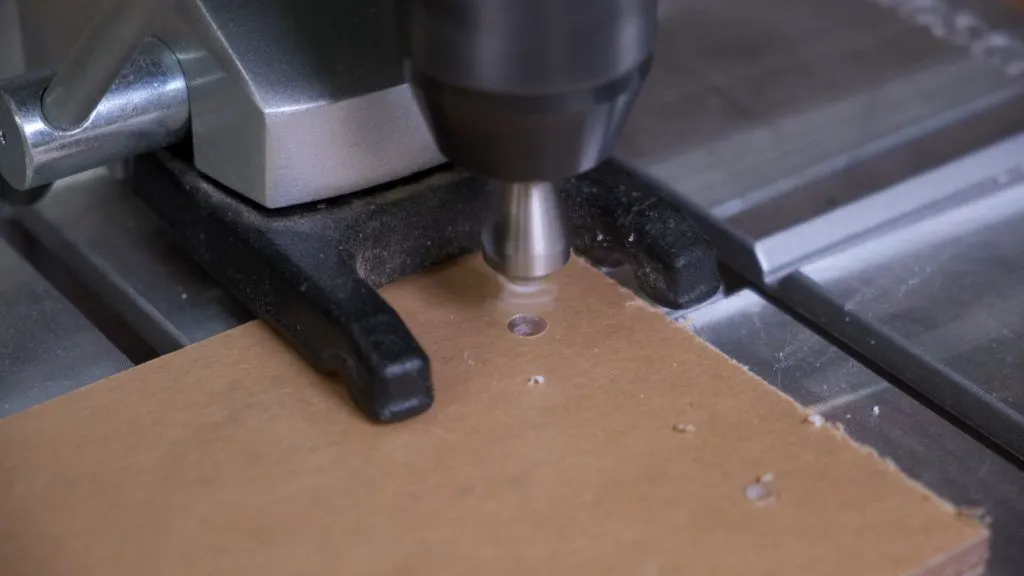
Make sure the countersink is deep enough that the screws sit slightly below the surface. If the original screws are particularly short, you may need a deeper counter sink or counter bore. I highly recommend “zero flute countersinks” for acrylic and wood – they give a much smoother result than the juicer style.
If your router uses non-flat headed screws, you might want to first counterbore your screw holes with a 12-15mm forstner bit for adjustment
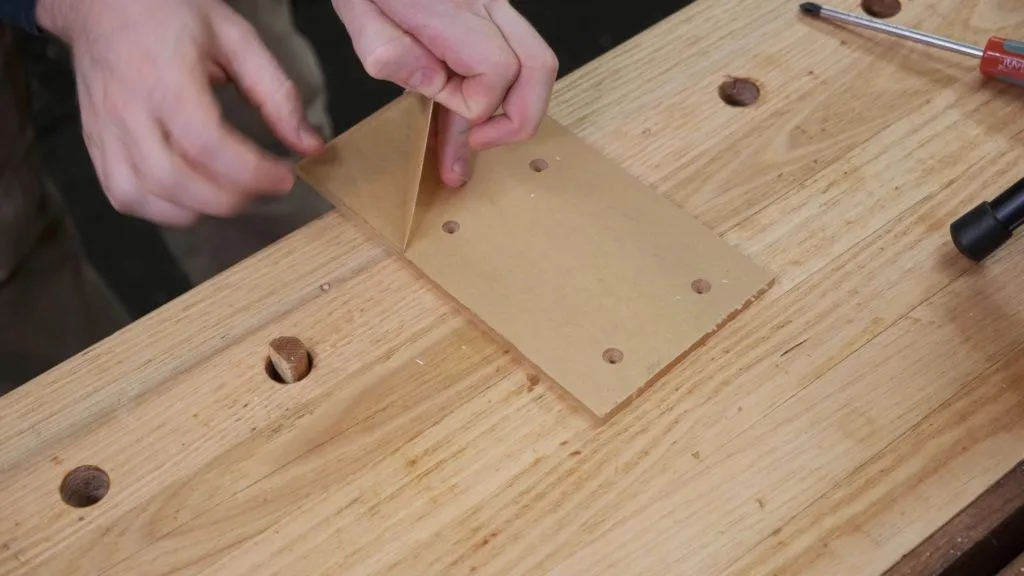
With the layout done, the protective paper can be removed from the acrylic.
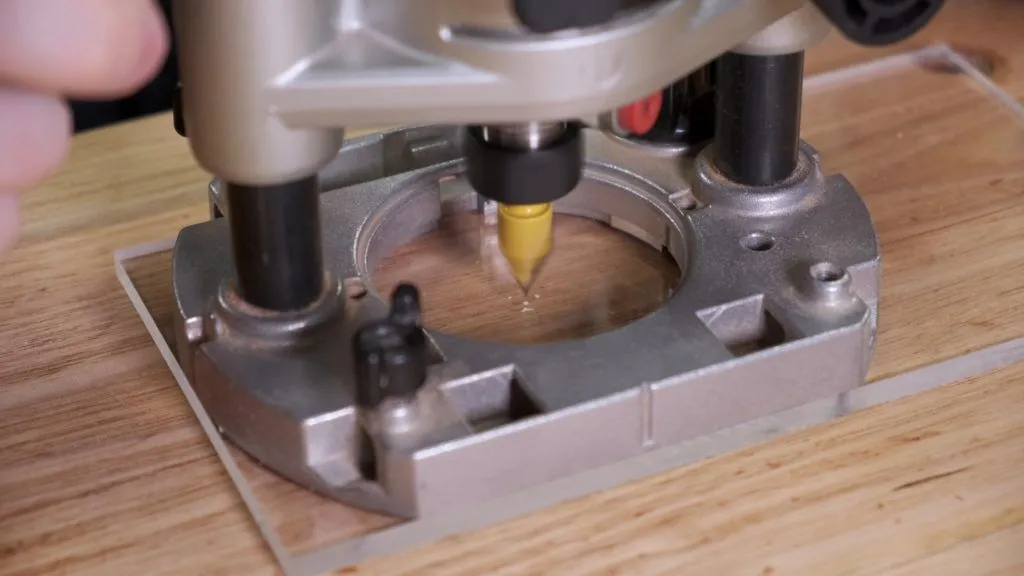
Guide bushings should be centered around your router bit. If it isn’t, best case you’ll get variable results when following a template, worst case you’ll chew up the inside of a bushing as it may clear the cutter on one side but not the other.
To find the center location for the guide bushing bore, first screw the new base onto the router. With countersunk screws, the base should be pulled to this exact same location every time.
Using a V-bit or other small bit in the router, a small dimple can be put on one side indicating the dead center of the router.
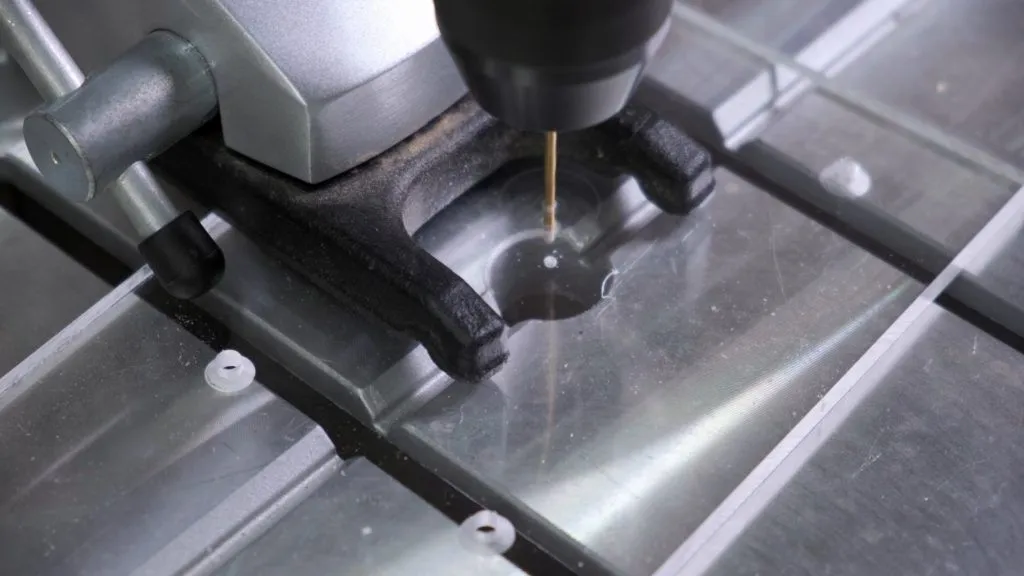
That hole can be extended through at the drill press – use a small twist bit – 1 or 2mm is perfect. You want it all the way through, but not too large that it causes issues for forstner bit spur.
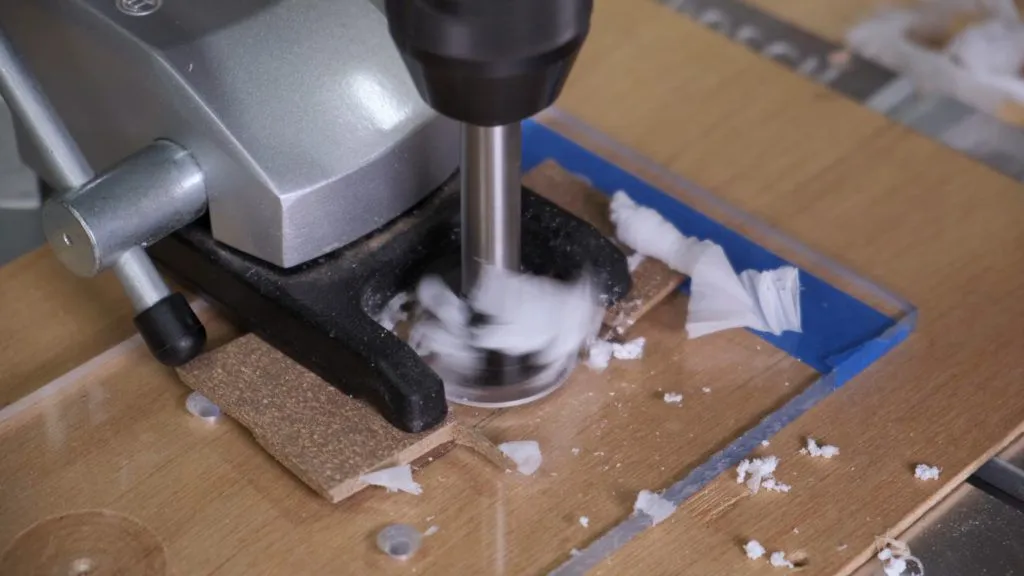
On the underside of the base (that is, the side the screws would be installed from), use a 35mm forstner bit to drill approximately 3mm deep. This should be the depth of the lip of your guide bushings. I’m using a carbide tipped bit which chews through acrylic but is grabbier.
Flip and drill a 32mm through hole. This can be 32mm or smaller – this is to just allow the largest router bits possible.
This should leave you with a stepped hole
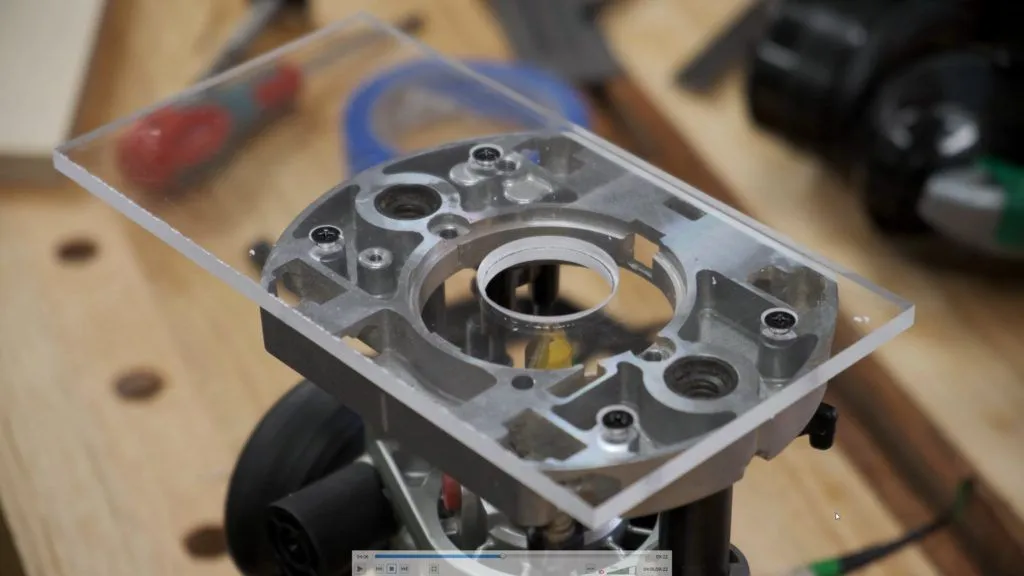
Guide bushings are installed by placing the bushing into the drilled recess, and a retaining nut holding it on to the other side.
This allows bits without bushings to follow templates or in the third photo you can see its ability to follow a template in the middle of a board to cut a square hole.
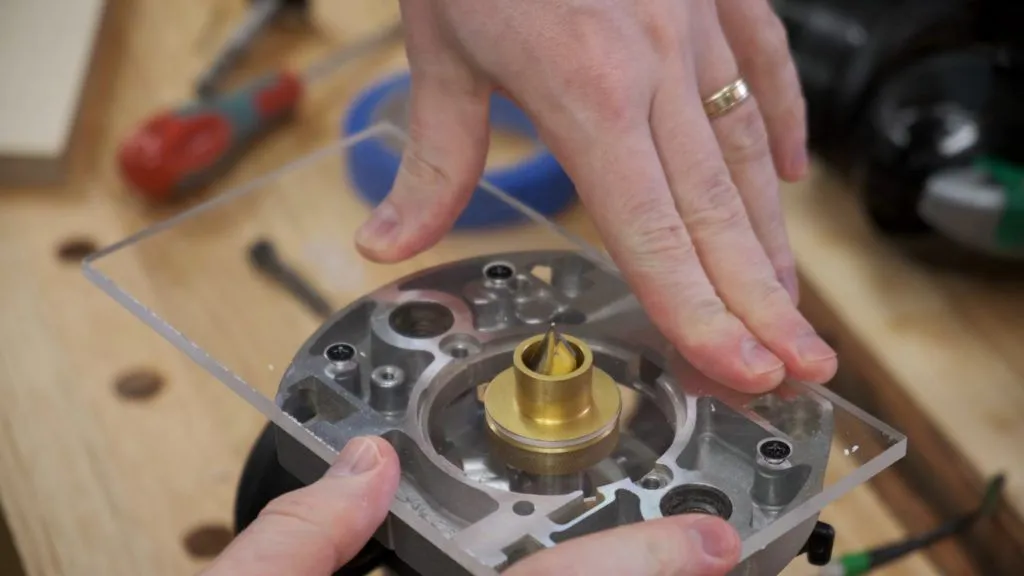
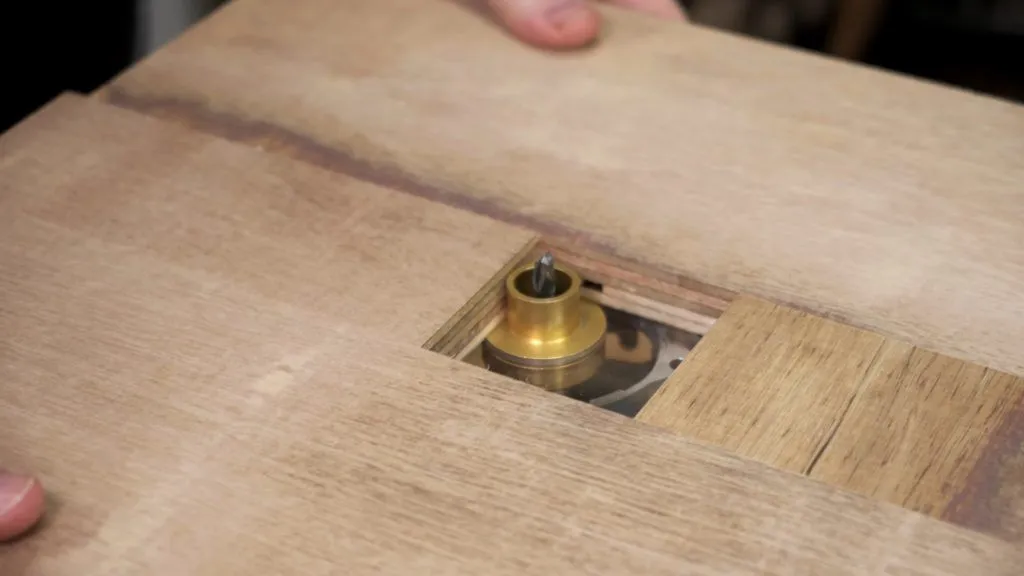
Basic Fence
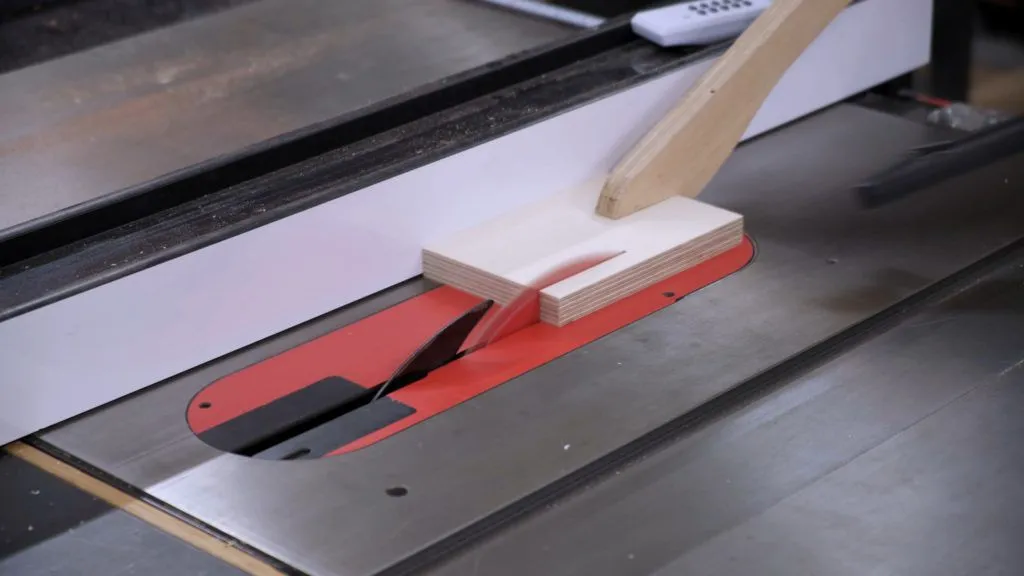
Making a fence without having a spare router with a fence is a little tricky, so I made a basic fence first that is perfectly functional but can be improved.
Cut a scrap of plywood down to the desired size – mine was the width of my router base (~90mm) x 60mm
I’m using M8 hardware, so I’m drilling a 9mm hole for a little bit of clearance and wiggle. These are starter holes for the jigsaw.
Using a fine tooth blade on the jigsaw, it gets dropped into one of the holes, and I cut a line to the other hole.
Rinse and repeat on the other side of the slot.
If your jigsaw has orbital mode, turn that off. Plywood isn’t so tough that you need to power through it, and turning off orbital model will give a much cleaner cut
The acrylic, these receive 10mm holes for even more wiggle room. A router fence doesn’t need to be square to anything because of the way the cutter works, so dead squareness isn’t an issue and won’t affect accuracy.
Better Fence
The original fence works just fine, but is frustrating to tighten down because the bolt heads can spin freely. Creating a recessed slot with a jigsaw is a little tricky, so instead I made a second fence using the router.
The process is much the same – the same size piece of plywood, and the same concept of a slot for the bolt to travel through, with the addition of a wider groove on one side to accept the bolt head.
I’m using a ¼” router bit, so I’ll need to make multiple passes width-wise to clear for the head of the M8 bolt. By loosening the bolts, I can tap over the fence until the edge of the bit lines up with the layout lines. Because the piece is symmetrical, it can be flipped before making any adjustments to the router fence position.

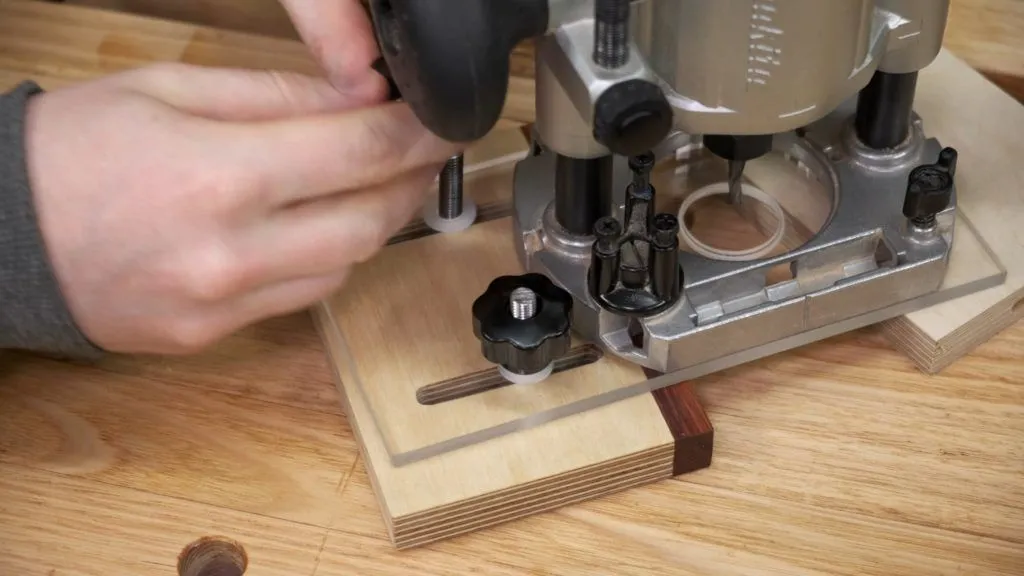
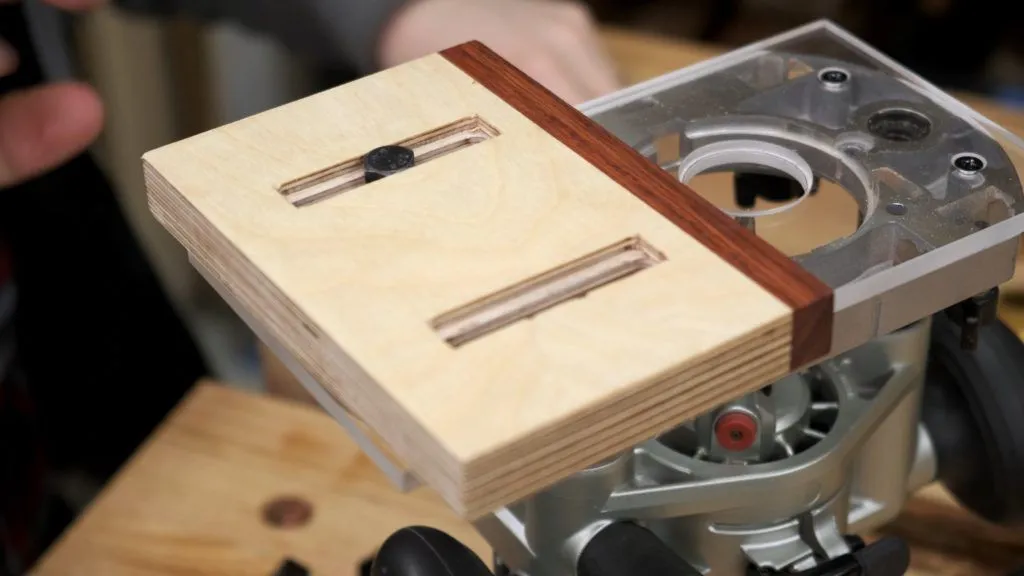
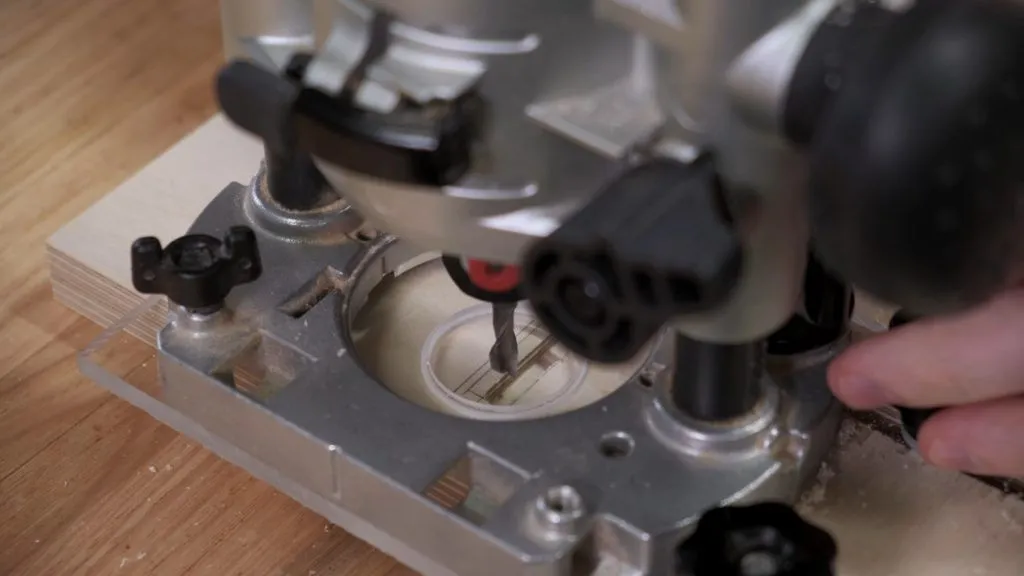
The clearance for the bolt of the head goes down about halfway through the plywood, then I started the same process for creating the through slot for the body of the bolt. The only difference with that was I flipped the work piece entirely so that I wasn’t going to route into my workbench.
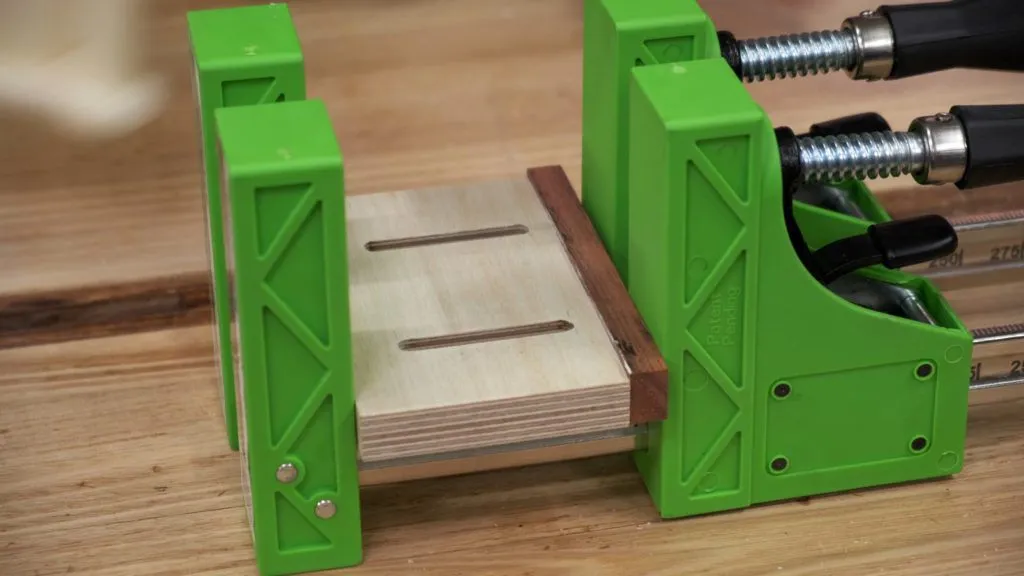
Gluing on a hardwood strip to the ‘face’ of the fence will create a smoother surface for the fence to ride on than the edge of plywood.
This isn’t critical, but it is a little bit nicer and looks prettier.